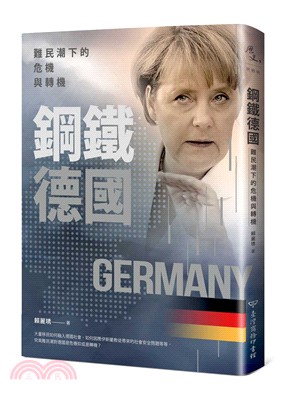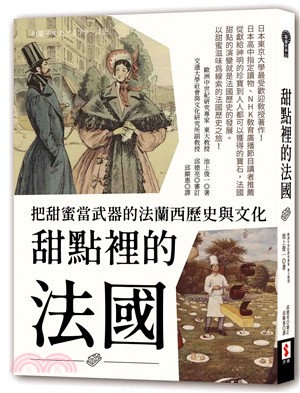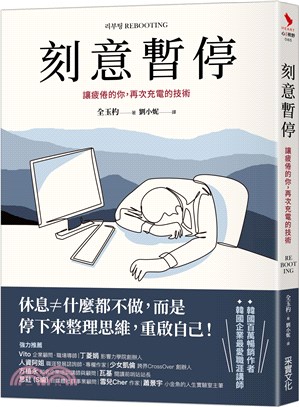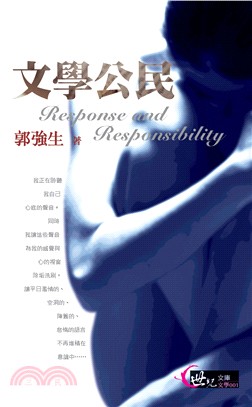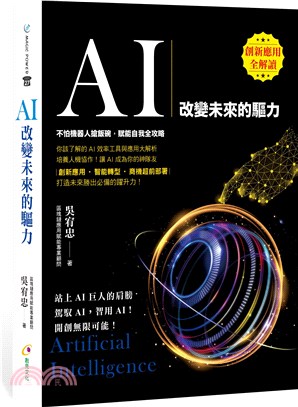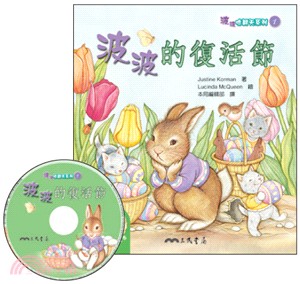定價
:NT$ 8100 元若需訂購本書,請電洽客服 02-25006600[分機130、131]。
相關商品
商品簡介
作者簡介
目次
商品簡介
Significantly expanded and updated with extensive revisions, new material, and a new chapter on emerging applications of switching converters, Power-Switching Converters, Third Edition offers the same trusted, accessible, and comprehensive information as its bestselling predecessors. Similar to the two previous editions, this book can be used for an introductory as well as a more advanced course.
Chapters begin with an introduction to switching converters and basic switching converter topologies. Entry level chapters continue with a discussion of resonant converters, isolated switching converters, and the control schemes of switching converters. Skipping to chapters 10 and 11, the subject matter involves an examination of interleaved converters and switched capacitor converters to round out and complete the overview of switching converter topologies.
More detailed chapters include the continuous time-modeling and discrete-time modeling of switching converters as well as analog control and digital control. Advanced material covers tools for the simulation of switching converters (including both PSpice and Matlab simulations) and the basic concepts necessary to understand various actual and emerging applications for switching converters, such as power factor correction, LED drivers, low-noise converters, and switching converters topologies for solar and fuel cells.
The final chapter contains several complete design examples, including experimental designs that may be used as technical references or for class laboratory projects. Supplementary information is available at crcpress.com including slides, PSpice examples (designed to run on the OrCAD 9.2 student version and PSIM software) and MATLAB scripts.
Continuing the august tradition of its predecessors, Power-Switching Converters, Third Edition provides introductory and advanced information on all aspects of power switching converters to give students the solid foundation and applicable knowledge required to advance in this growing field.
Chapters begin with an introduction to switching converters and basic switching converter topologies. Entry level chapters continue with a discussion of resonant converters, isolated switching converters, and the control schemes of switching converters. Skipping to chapters 10 and 11, the subject matter involves an examination of interleaved converters and switched capacitor converters to round out and complete the overview of switching converter topologies.
More detailed chapters include the continuous time-modeling and discrete-time modeling of switching converters as well as analog control and digital control. Advanced material covers tools for the simulation of switching converters (including both PSpice and Matlab simulations) and the basic concepts necessary to understand various actual and emerging applications for switching converters, such as power factor correction, LED drivers, low-noise converters, and switching converters topologies for solar and fuel cells.
The final chapter contains several complete design examples, including experimental designs that may be used as technical references or for class laboratory projects. Supplementary information is available at crcpress.com including slides, PSpice examples (designed to run on the OrCAD 9.2 student version and PSIM software) and MATLAB scripts.
Continuing the august tradition of its predecessors, Power-Switching Converters, Third Edition provides introductory and advanced information on all aspects of power switching converters to give students the solid foundation and applicable knowledge required to advance in this growing field.
作者簡介
Simon S. Ang is with the Electrical Engineering Department at the University of Arkansas.Alejandro R. Oliva is with the Department of Engineering at the Universidad Nacional del Sur, Argentina.
目次
INTRODUCTION TO SWITCHING CONVERTERS
Introduction
Industry trends
Linear converter
Linear series-pass regulator
Linear shunt regulator
Switching converters
Basic switching converter with resistive load
Basic switching converter with RL load
Principles of steady state converter analysis
Inductor volt-second balance
Capacitor charge balance
Problems
BASIC SWITCHING CONVERTER TOPOLOGIES
Introduction
Buck converter
Continuous mode
Discontinuous mode
Synchronous rectifier
Ripple steering
Boost converter
Continuous mode
Discontinuous mode
Buck-boost converter
Continuous mode
Discontinuous mode
Cûk converter
SEPIC converter
Continuous conduction mode
Design considerations
Zeta converter
Converter realization with non-ideal components
Inductor model
Capacitor model
Semiconductor losses
Effect of semiconductor losses on the output voltage
Problems
RESONANT CONVERTERS
Introduction
Parallel resonant circuit - A review
Series resonant circuit - A review
Classification of quasi-resonant switches
Zero-current-switching quasi-resonant buck converter
Zero-current-switching quasi-resonant boost converter
Zero-voltage-switching quasi-resonant buck converter
Zero-voltage-switching quasi-resonant boost converter
Series-loaded resonant converter
Discontinuous mode ( < fs < fn)
Continuous mode (fs > fn or above-resonant mode)
Continuous mode (fn < fs < fn or below-resonant mode)
Parallel-loaded resonant converter
Discontinuous mode ( < f < fn)
Continuous mode (fs > f or above-resonant mode)
Continuous mode (fn < fs < fn or below-resonant mode)
Problems
ISOLATED SWITCHING CONVERTERS
Introduction
Forward converter
Two-switch forward converter
Push-pull converter
Half-bridge switching converter
Full-bridge switching converter
Fly back converter
Two-switch fly back converter
Dual active bridge converter
Power flow control
Zero-current-switching quasi-resonant half-bridge converter
Problems
CONTROL SCHEMES OF SWITCHING CONVERTERS
Introduction
Pulse-width modulation
Voltage-mode PWM scheme
Current-mode PWM scheme
Instability for D>%
Compensation with external ramp
Hysteresis control: switching current source
Steady-state analysis during ton
Commercial integrated circuit controllers
Fixed-frequency voltage-mode SG controller
Variable-frequency voltage-mode TL controller
Fixed-frequency current-mode UC PWM controller
TinySwitch-II family of low power off-line switchers
Control schemes for resonant converters
Off-line controllers for resonant converters
L operation
Problems
CONTINUOUS-TIME MODELING OF SWITCHING CONVERTERS
Introduction
Switching converter analysis using classical control techniques
Basic linear model of the open-loop switching converter
PWM modulator model
Averaged switching converter models
Output filter model
Summary of small-signal models of switching converters
Linear model of the voltage regulator including external perturbances
Output impedance and stability
State-space representation of switching converters
State-space averaging
Switching converter transfer functions
Source-to-state transfer functions
Input EMI filters
Stability considerations
Problems
ANALOG CONTROL OF SWITCHING CONVERTERS
Introduction
Review of negative feedback using classical-control techniques
Closed-loop gain
Stability analysis
Relative stability
Linear model of the closed-loop switching converter
Feedback network
Error amplifier compensation networks
PI compensation network
PID compensation network
Proportional control
Feedback compensation in a buck converter with output capacitor ESR
Feedback compensation in a buck converter with no output capacitor ESR
Complete state feedback
Design of a control system with complete state feedback
Pole selection
Feedback gains
Problems
DISCRETE-TIME MODELING OF SWITCHING CONVERTERS
Introduction
Continuous-time systems
Direct discrete model
Linear direct discrete model
Continuous-time averaged state-space model
Averaged discrete-time model of the switching converter
Problems
DIGITAL CONTROL OF SWITCHING CONVERTERS
Introduction
Proportional controller
Digital redesign of a PID controller
Design of a discrete control system with complete state feedback
Pole selection
Feedback gains
Voltage mode control
Current mode control
Problems
INTERLEAVED CONVERTERS
Introduction
Interleaved buck converter
State-space averaged model
Interleaved boost converter
State-space averaged model
Interleaved converter operation based on current-mode
Ripple calculations
Number of converters
Power factor correction
Problems
SWITCHED CAPACITOR CONVERTERS
Introduction
Unidirectional power flow SCC
Basic step-up converter
Basic step-down converter
Basic inverting converter
Alternative switched capacitor converter topologies
Step-down converter
Step-up converter
n-stage step-down SCC
n-stage step-up SCC
Bi-directional power flow SCC
Step-up step-down converter
Luo converter
Resonant converters
Zero-current switching
Losses on switched-capacitor power converters
Problems
SIMULATION OF SWITCHING CONVERTERS
Introduction
SPICE circuit representation
PSPICE simulations using CIR
PSPICE simulations using schematics entry
Small-signal analysis of switching converters
Creating capture symbols for PSPICE simulation
Solving convergence problems
Switching converter simulation using Matlab
Working with transfer functions
Working with matrices
Switching converter simulation using Simulink
Transfer function example using Simulink
State-space example using Simulink
Problems
APPLICATIONS OF SWITCHING CONVERTERS
Power factor correction
Introduction
Review of basic concepts
Principle of power factor correction
Self-power factor correction properties of switching converters
Buck converter
Boost converter
Buck-boost converter
Flyback converter
Control techniques for power factor correctors
Peak current mode control (PCM)
Average current mode control
Hysteresis control
Borderline or boundary control
Discontinuous current PWM control
Power factor correction circuits
Low noise DC-DC converters
Introduction
Techniques to reduce EMI
Capacitive coupling
Inductive coupling
Input filtering
Output Filtering
Slew rate limiting
Switching converters for solar cells
Introduction
Solar cell model
Maximum-power point tracking
Switching converters for solar cells
Switching converters for fuel cells
Switching converters for LED drivers
Buck-based LED drivers
Boost-based LED drivers
Cûk-based LED drivers
SEPIC-based LED drivers
LED drivers for AC input
SWITCHING CONVERTER DESIGN CASE STUDIES
Introduction
Voltage-mode discontinuous-conduction-mode buck converter design
Controller design
Small-signal model
Design of the compensation network and error amplifier
The closed-loop buck converter
Simulation results
Experimental results
Digital control of a voltage-mode synchronous buck converter
Circuit parameters
Closed-loop pole selection
Discrete-time model
Feedback gains
Control strategy
Analog model for PSpice simulations
Simulation results
Sensitivity of the closed-loop poles due to load variations
Experimental results
Digital control of a current-mode synchronous buck converter
Continuous-time state model
Obtaining the discrete-time model
Current-mode instability
Extended-state model for a tracking regulator
Feedback gains
Control strategy
Simulation results
Sensitivity of the closed-loop poles due to load variations
Experimental results
DSP program
UC-based fly back design
Design specifications
Discontinuous conduction mode
Preliminary calculations
Open loop simulations
Current loop
Voltage loop
Small signal model
Frequency compensation
EMI filter design
Printed circuit board design
Experimental results
TopSwitch-based flyback design
Design specifications
Preliminary calculations
Experimental results
TinySwitch-based flyback design
Experimental results
Switching audio amplifier
Case study
BIBLIOGRAPHY
INDEX
Introduction
Industry trends
Linear converter
Linear series-pass regulator
Linear shunt regulator
Switching converters
Basic switching converter with resistive load
Basic switching converter with RL load
Principles of steady state converter analysis
Inductor volt-second balance
Capacitor charge balance
Problems
BASIC SWITCHING CONVERTER TOPOLOGIES
Introduction
Buck converter
Continuous mode
Discontinuous mode
Synchronous rectifier
Ripple steering
Boost converter
Continuous mode
Discontinuous mode
Buck-boost converter
Continuous mode
Discontinuous mode
Cûk converter
SEPIC converter
Continuous conduction mode
Design considerations
Zeta converter
Converter realization with non-ideal components
Inductor model
Capacitor model
Semiconductor losses
Effect of semiconductor losses on the output voltage
Problems
RESONANT CONVERTERS
Introduction
Parallel resonant circuit - A review
Series resonant circuit - A review
Classification of quasi-resonant switches
Zero-current-switching quasi-resonant buck converter
Zero-current-switching quasi-resonant boost converter
Zero-voltage-switching quasi-resonant buck converter
Zero-voltage-switching quasi-resonant boost converter
Series-loaded resonant converter
Discontinuous mode ( < fs < fn)
Continuous mode (fs > fn or above-resonant mode)
Continuous mode (fn < fs < fn or below-resonant mode)
Parallel-loaded resonant converter
Discontinuous mode ( < f < fn)
Continuous mode (fs > f or above-resonant mode)
Continuous mode (fn < fs < fn or below-resonant mode)
Problems
ISOLATED SWITCHING CONVERTERS
Introduction
Forward converter
Two-switch forward converter
Push-pull converter
Half-bridge switching converter
Full-bridge switching converter
Fly back converter
Two-switch fly back converter
Dual active bridge converter
Power flow control
Zero-current-switching quasi-resonant half-bridge converter
Problems
CONTROL SCHEMES OF SWITCHING CONVERTERS
Introduction
Pulse-width modulation
Voltage-mode PWM scheme
Current-mode PWM scheme
Instability for D>%
Compensation with external ramp
Hysteresis control: switching current source
Steady-state analysis during ton
Commercial integrated circuit controllers
Fixed-frequency voltage-mode SG controller
Variable-frequency voltage-mode TL controller
Fixed-frequency current-mode UC PWM controller
TinySwitch-II family of low power off-line switchers
Control schemes for resonant converters
Off-line controllers for resonant converters
L operation
Problems
CONTINUOUS-TIME MODELING OF SWITCHING CONVERTERS
Introduction
Switching converter analysis using classical control techniques
Basic linear model of the open-loop switching converter
PWM modulator model
Averaged switching converter models
Output filter model
Summary of small-signal models of switching converters
Linear model of the voltage regulator including external perturbances
Output impedance and stability
State-space representation of switching converters
State-space averaging
Switching converter transfer functions
Source-to-state transfer functions
Input EMI filters
Stability considerations
Problems
ANALOG CONTROL OF SWITCHING CONVERTERS
Introduction
Review of negative feedback using classical-control techniques
Closed-loop gain
Stability analysis
Relative stability
Linear model of the closed-loop switching converter
Feedback network
Error amplifier compensation networks
PI compensation network
PID compensation network
Proportional control
Feedback compensation in a buck converter with output capacitor ESR
Feedback compensation in a buck converter with no output capacitor ESR
Complete state feedback
Design of a control system with complete state feedback
Pole selection
Feedback gains
Problems
DISCRETE-TIME MODELING OF SWITCHING CONVERTERS
Introduction
Continuous-time systems
Direct discrete model
Linear direct discrete model
Continuous-time averaged state-space model
Averaged discrete-time model of the switching converter
Problems
DIGITAL CONTROL OF SWITCHING CONVERTERS
Introduction
Proportional controller
Digital redesign of a PID controller
Design of a discrete control system with complete state feedback
Pole selection
Feedback gains
Voltage mode control
Current mode control
Problems
INTERLEAVED CONVERTERS
Introduction
Interleaved buck converter
State-space averaged model
Interleaved boost converter
State-space averaged model
Interleaved converter operation based on current-mode
Ripple calculations
Number of converters
Power factor correction
Problems
SWITCHED CAPACITOR CONVERTERS
Introduction
Unidirectional power flow SCC
Basic step-up converter
Basic step-down converter
Basic inverting converter
Alternative switched capacitor converter topologies
Step-down converter
Step-up converter
n-stage step-down SCC
n-stage step-up SCC
Bi-directional power flow SCC
Step-up step-down converter
Luo converter
Resonant converters
Zero-current switching
Losses on switched-capacitor power converters
Problems
SIMULATION OF SWITCHING CONVERTERS
Introduction
SPICE circuit representation
PSPICE simulations using CIR
PSPICE simulations using schematics entry
Small-signal analysis of switching converters
Creating capture symbols for PSPICE simulation
Solving convergence problems
Switching converter simulation using Matlab
Working with transfer functions
Working with matrices
Switching converter simulation using Simulink
Transfer function example using Simulink
State-space example using Simulink
Problems
APPLICATIONS OF SWITCHING CONVERTERS
Power factor correction
Introduction
Review of basic concepts
Principle of power factor correction
Self-power factor correction properties of switching converters
Buck converter
Boost converter
Buck-boost converter
Flyback converter
Control techniques for power factor correctors
Peak current mode control (PCM)
Average current mode control
Hysteresis control
Borderline or boundary control
Discontinuous current PWM control
Power factor correction circuits
Low noise DC-DC converters
Introduction
Techniques to reduce EMI
Capacitive coupling
Inductive coupling
Input filtering
Output Filtering
Slew rate limiting
Switching converters for solar cells
Introduction
Solar cell model
Maximum-power point tracking
Switching converters for solar cells
Switching converters for fuel cells
Switching converters for LED drivers
Buck-based LED drivers
Boost-based LED drivers
Cûk-based LED drivers
SEPIC-based LED drivers
LED drivers for AC input
SWITCHING CONVERTER DESIGN CASE STUDIES
Introduction
Voltage-mode discontinuous-conduction-mode buck converter design
Controller design
Small-signal model
Design of the compensation network and error amplifier
The closed-loop buck converter
Simulation results
Experimental results
Digital control of a voltage-mode synchronous buck converter
Circuit parameters
Closed-loop pole selection
Discrete-time model
Feedback gains
Control strategy
Analog model for PSpice simulations
Simulation results
Sensitivity of the closed-loop poles due to load variations
Experimental results
Digital control of a current-mode synchronous buck converter
Continuous-time state model
Obtaining the discrete-time model
Current-mode instability
Extended-state model for a tracking regulator
Feedback gains
Control strategy
Simulation results
Sensitivity of the closed-loop poles due to load variations
Experimental results
DSP program
UC-based fly back design
Design specifications
Discontinuous conduction mode
Preliminary calculations
Open loop simulations
Current loop
Voltage loop
Small signal model
Frequency compensation
EMI filter design
Printed circuit board design
Experimental results
TopSwitch-based flyback design
Design specifications
Preliminary calculations
Experimental results
TinySwitch-based flyback design
Experimental results
Switching audio amplifier
Case study
BIBLIOGRAPHY
INDEX
主題書展
更多
主題書展
更多書展本週66折
您曾經瀏覽過的商品
購物須知
外文書商品之書封,為出版社提供之樣本。實際出貨商品,以出版社所提供之現有版本為主。部份書籍,因出版社供應狀況特殊,匯率將依實際狀況做調整。
無庫存之商品,在您完成訂單程序之後,將以空運的方式為你下單調貨。為了縮短等待的時間,建議您將外文書與其他商品分開下單,以獲得最快的取貨速度,平均調貨時間為1~2個月。
為了保護您的權益,「三民網路書店」提供會員七日商品鑑賞期(收到商品為起始日)。
若要辦理退貨,請在商品鑑賞期內寄回,且商品必須是全新狀態與完整包裝(商品、附件、發票、隨貨贈品等)否則恕不接受退貨。














